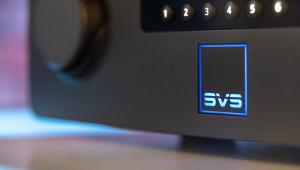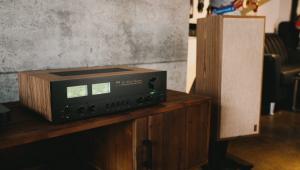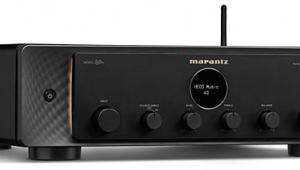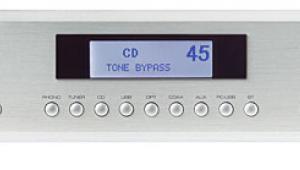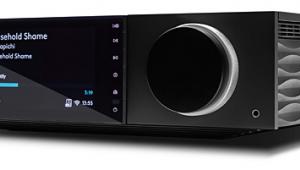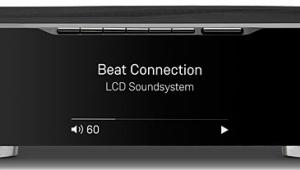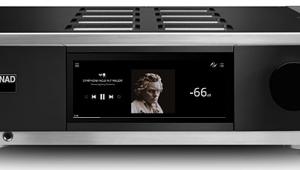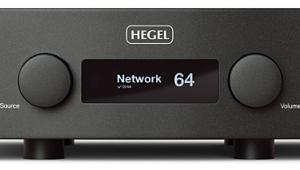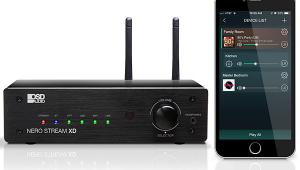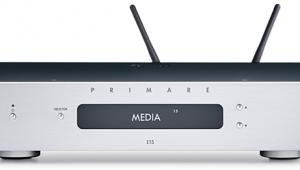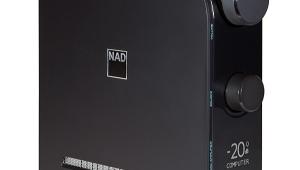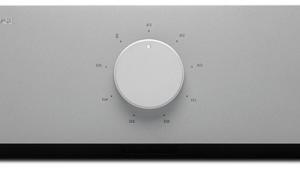Rotel RA-1572MKII Integrated Amplifier Review Page 2
Detail and finesse? I've been listening to a lot of string quartets recently, including the Bartók fourth, an undisputed masterwork of the last century. On an energetic reading by the Heath Quartet (Harmonia Mundi, 24-bit/96kHz FLAC, Qobuz), the Rotel effortlessly conveyed the full-throttle aggression of the opening movement, but I made special note of the atmospherics of the fourth, Allegretto pizzicato. On this, the fleshy plink of plucked notes easily distinguished the robust thump of the cello, the cupped thwack of the viola, and the sharper thup of the violins, and was followed by the violent snap of heavily accented notes as strings recoiled into ebony fingerboards.
There's no better genre than big band to wring out the dynamic extremes of any amplifier/speaker synergy, and there are few better-produced big band recordings than Dave Grusin Presents the GRP All-Star Big Band Live! (16/44.1 FLAC, Qobuz). This mid-'90s outfit really was an all-star lineup, featuring such names as Randy Brecker, Ernie Watts, and Arturo Sandoval to name just three. Grusin's stars blew big-band music updated with amplified bass and modern-sounding drums, pristinely produced and recorded by Grusin's ur-audiophile label GRP, as exemplified by a super-energized performance of the Dizzy Gillespie afro-bopper "Manteca."

To tease the Rotel's dynamic- power limits, I had to probe well beyond my normal listening levels to some pretty extreme loudness, cresting 96dB SPL on the strongest accents. But Rotel's integrated amp remained clean and dynamically honest, right through the big all- horns blasting lines, the dueling trumpet solos of Sandoval and Brecker, and the full-bore drum breaks by kit stalwart Dave Weckl. I had to push still further, urging my low-sensitivity Energys past the 100dB mark, to drive the RA-1572MKII out of its happy place, evidenced only by a harder, more metallic sheen on the full-brass punches signaling incipient clipping. This is a very capable and, I suspect, conservatively spec'd, "120-watt" amplifier. Unless you have a very large room, unusually low-sensitivity speakers, or a serious head-banging habit, Rotel's latest should provide all the juice you need.
Features And Ergonomics
Of course, the "integrated" in integrated amplifier refers to the preamplifier functions, which include the user interface. Rotel equips the RA-1572MKII with a slim, full-function remote control that includes many extra buttons for a companion disc player. The design has been around for some years now, but is still functional and reason- ably ergonomic, though the rather dim lettering could use brightening. Rotel's front-panel display consists of a 5 x 2-inch, two-line dot-matrix readout: straightforward, but I'm afraid that few over the age of 40 will be able to read it from more than a six- or eight-foot distance. I certainly couldn't from my listening position.
Fortunately, there isn't much to see, other than the selected input, and volume setting, both of which you should be able to divine easily enough blind. Setup options include things such as auto-on modes, default turn-on volume, display and pilot-light brightness (the Bright setting is likely visible from the International Space Station), tone controls, and more.
Among several interesting "mores" is the ability to set each of the RA-1572MKII's inputs to fixed- or variable-volume response. This could allow for a home theater bypass setup in a surround system where the Rotel acts as a power amplifier for the main front left/right channels, while leaving it at liberty to act independently for its other, volume-controlled inputs. Another menu item toggles the Rotel's digital-to-analog section between 24-bit/MQA- enabled, and 32-bit/non-MQA PCM decoding. Like many designs, the RA-1572MKII does not accept DSD data directly, though some sources will convert DSD to PCM ("DoP") for playback, with zero sonic penalty.
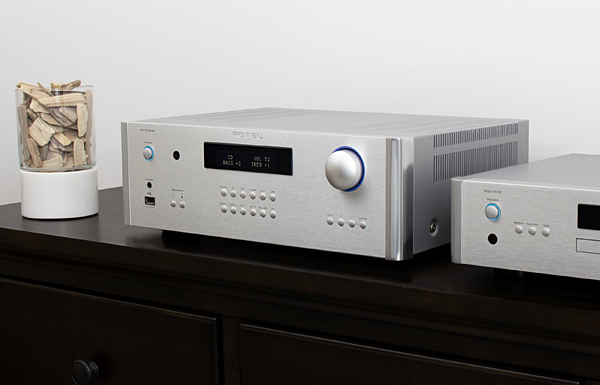
And that brings me to the Rotel's streaming features, which are limited to USB-audio (excellent, but of limited flexibility) and Bluetooth (meh). An obvious advantage would be built-in wired/wireless audio streaming such as many integrated amplifiers of similar cost already include, or a standalone network music player sitting on the shelf next to the RA-1572MKII, though Rotel does not offer one. The absence of both Wi-Fi and Airplay, which Roon among many other popular music-player/integrator/distribution applications employs as a pathway of last resort along with Chromecast built-in, only exacerbates this lack. And while the snootier level of audio snobs may scoff at Apple's AirPlay as being "only" CD-quality-capable, in my experience it works just fine for serious listening. But to be clear, the RA-1572 MKII is certified as Roon Tested, and it worked flawlessly with Roon in my system via its USB input.
Conclusion
Fortunately, I don't have to make audio product design decisions for companies, but just report upon them. Rotel's criteria for the RA-1572MKII integrated were obviously amplifier performance and sound quality, and with its hefty power supply, generous output capability, and audibly transparent analog and digital sections, the RA-1572MKII delivers these by the bushel. I can't imagine anyone seeking a high-performance integrated amp would be disappointed.

